

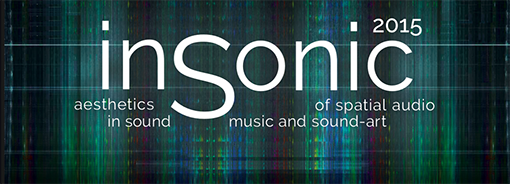
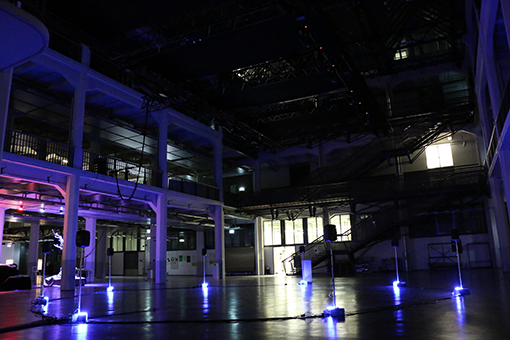
Symbols and Boundaries, installation by Yuan-Yi Fan.
Event Link: zkm.de/en/event/2015/11/globale-insonic2015
Dates: December 12 - January 23
Opening Reception: Saturday, December 12, 6-8pm
"Anamorphic Fluid"
The exhibition features two panels of large lenticular images that juxtapose historical photographs from a personal family archive with contemporary landscape images. In addition, the exhibition features a large two screen animation titled "Anamorphic Fluid" that simulates the same photographs in the panels floating randomly in virtual space.
Custom software for this project was designed in collaboration with Donghao Ren and Jieliang Luo, Media Arts and Technology, UCSB.
This award is extremely competitive, with more than 100 eligible nominees from all of the academic departments across campus.
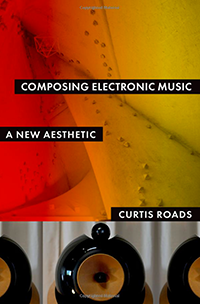
In it, Roads outlines a new theory of composition based on the toolkit of electronic music techniques. The theory consists of a framework of concepts and a vocabulary of terms describing musical materials, their transformation, and their organization. Central to this discourse is the notion of narrative structure in composition – how sounds are born, interact, transform, and die. It presents a guidebook: a tour of facts, history, commentary, opinions, and pointers to interesting ideas and new possibilities to consider and explore.
The idea of quantum simulation, first conceived by Richard Feynman in his influential 1982 lecture "Simulating Physics with Computers" introduced a peculiar new way of thinking about the relationship between the material and the symbolic. This paper examines the conceptual and aesthetic implications of quantum simulation by reading Feynman’s lecture with Theodor W. Adorno’s aesthetic theory. It argues that quantum simulation, as it requires nothing less than the simulated to become the fabric of the simulation, actively symbolizes the material – not by referencing it but by transforming it into an actual symbolic system that exists in the real world, like the electric charges that do not represent but are our thoughts in the realm of the material. The very notion of quantum simulation can thus be understood to be in a state of conceptual superposition – which is, at its core, an aesthetic principle.
sa2015.siggraph.org/en/attendees/art-gallery.html?view=session&type=ag_talks&sessionid=170
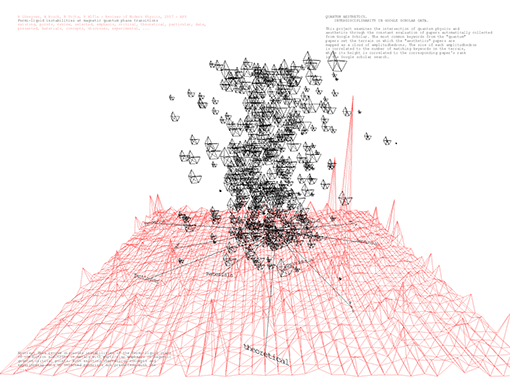
The competition was organized by UCSB’s Schuller Lab and the Center for Science and Engineering Partnerships at the California NanoSystems Institute.The 10 images on exhibit were selected by a panel of judges, and by popular vote, based on their aesthetic excellence as well as scientific or technical interest.
www.library.ucsb.edu/events-exhibitions/exhibitions/view-exhibition-1
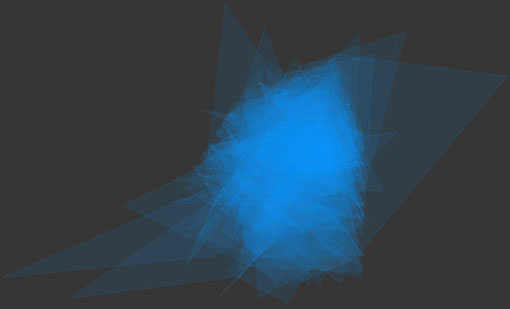
The exchange program is sponsored by the Baden-Württemberg Foundation in Germany, lasting for three months. The participant will be working with the Spatial Audio Group at the Staatliche Hochschule für Gestaltung Karlsruhe (HfG).
The installation is a tribute to the Nobel Prize winning author Gabriel García Márquez's imaginary country "Macondo", as described in his book "One Hundred Years of Solitude". Users at the exhibit were able to upload digital photographs, and assign to it one of eight key concepts that captured essential themes related to the world of Macondo: love, violence, home, landscape, memory, celebration, food, and character. The photographs were then categorized and displayed on a large custom built curved screen.
An article describing the installation was published in the September/October edition of the IEEE Computer Graphics and Applications Journal: online.qmags.com/CGA0915#pg15&mode2.
MAT PhD student Juan Manuel Escalante contributed to the design of the interactive screens.
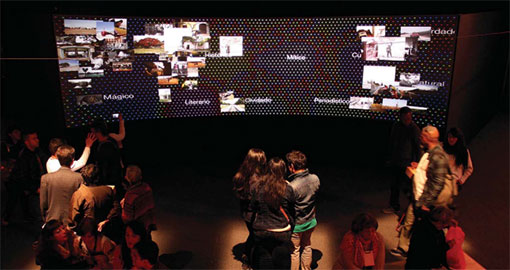
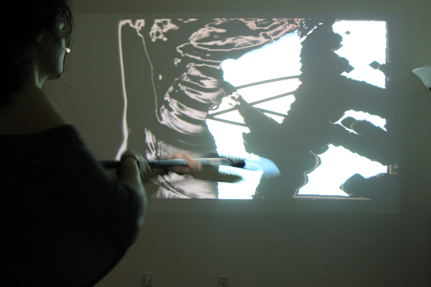
For more information go to: californiastudies.org/projects
The goal of this symposium is to survey a broad swath of ongoing music research at all the UC campuses and schools within each campus, ranging from studies examining the effects of music participation on learning and health, to brain imaging studies, to studies on music development and skill acquisition.
"AutoVision" is a self-contained, autonomous visual eco-system consisting of three tilt-swivel-zoom cameras that are mounted above the exhibition space, and project a full virtual representation of the gallery space on three projectors. Each camera is programmed to search for faces in the crowd, and negotiate with each other on which face to investigate collectively.
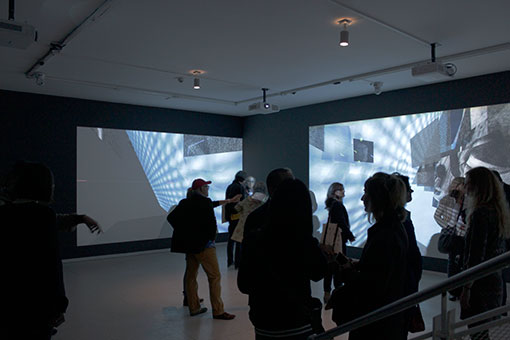
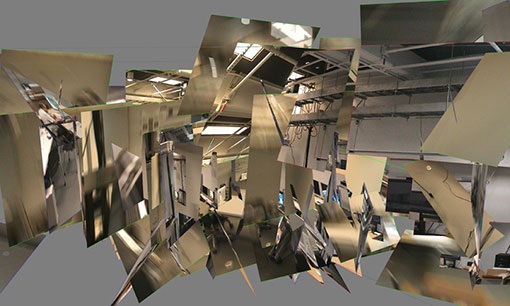
The goal of the workshop is to teach students the basic methods of creating data visualizations in Processing. The audience will consist of undergraduates and graduate students from the Digital Media Technology program. The grand finale of the workshop will be a large exhibition resulting from a collaboration of the instructors and students.
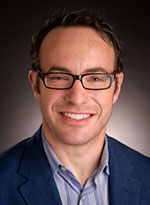
Kaplan was a long-time senior vice president of technology for Warner Bros. Records before helping start Live Nation Labs, a tech arm for the concert ticket giant. He spent the last seven months as the general manager of audio fingerprinting pioneer Gracenote.
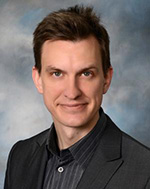
Dr. Visell's research focuses on haptic engineering, robotics, and the mechanics and neuroscience of touch. His work is motivated by creative applications in haptic human-computer interaction, sensorimotor augmentation, and interaction in virtual reality.
During this time, Marco will develop "Symphonic Picnic", an interactive exhibit that uses computer vision technology to translate art into music. As part of the exhibition, visitors will be invited to create their own shapes in a variety of colors and work with Pinter to witness how subtleties in their design affect sound.
The image is a visualization of data from the Seattle Central Library, and was made during a data visualization course taught by professor George Legrady.
www.cambridge.org/us/academic/subjects/general/digital-humanities-primer-students-and-scholars
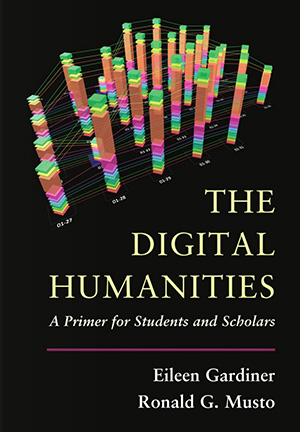
Professor George Legrady - We Are Stardust
Yoon Chung Han (Phd Student) - Digiti Sonus
Sterling Crispin (MAT alumnus) - Data-Masks
zkm.de/en/event/2015/09/globale-infosphere
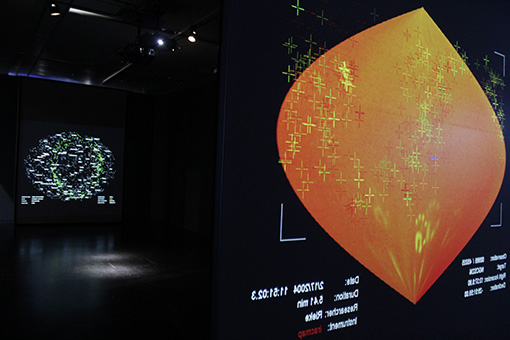
We Are Stardust is a two-screen projection installation that maps the sequence of the 45000 sky observations of the Spitzer Infrared telescope satellite mission from 2003 to 2009. The installation includes a military grade infrared camera by which visitors to the gallery are visually rendered according to their heat values. Software engineering by MAT alumni Javier Villegas and Andres Burbano.

Digiti Sonus is an interactive fingerprint sonification or interactive sound installation that transforms human's fingerprints into musical sound. The idea is to allow audience to explore their own identities through unique sound generated by their fingerprint patterns based on algorithmic computing and a physical device. The captured sound is looped and harmonized with other fingerprint sound so that the result is a real time experimental music as a representation of integrated human identities and societal communication.
yoonchunghan.com/portfolio/DigitiSonus.html
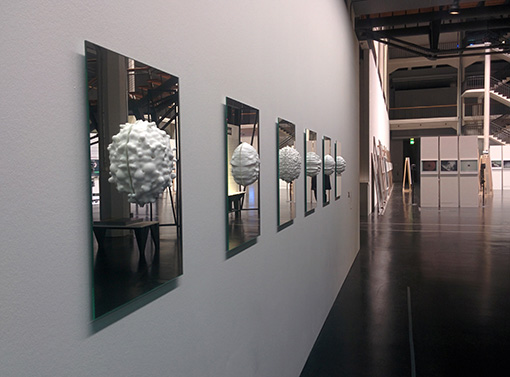
Data-masks are face masks which were created by reverse engineering facial recognition and detection algorithms. These algorithms were used to guide an evolving system toward the production of human-like faces. These evolved faces were then 3D printed as masks, shadows of human beings as seen by the minds-eye of the machine-organism. This exposes the way the machine, and the surveillance state, view human identity and this makes aspects of these invisible power structures visible.
journals.cambridge.org/action/displayAbstract?fromPage=online&aid=9358355&fileId=S204912551400020X
Recent PhD graduate Yuan-Yi "Danny" Fan is now working as a software engineer at the startup PULS in Hollywood.
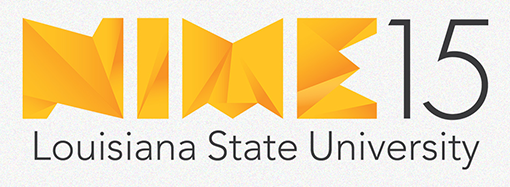
Performances
Ensemble Feedback - by the CREATE Ensemble, directed by Matt Wright, with Fernando Estrada, Anis Haron, Charlie Roberts, Muhammad Hafiz Wan Rosli, Hannen (Hannah) Wolfe, Tim Wood and Karl Yerkes.
Blinky Gibberings - by Charlie Roberts.
Art Installations
Conducting Studies - by MAT alumni Marco Pinter and Ava Ansari.
Paper Presentations
Ensemble Feedback Instruments - Muhammad Hafiz Wan Rosli, Karl Yerkes, Matthew Wright, Timothy Wood, Hannen (Hannah) Wolfe, Charlie Roberts, Anis Haron and Fernando Rincon Estrada.
Beyond Editing: Extended Interaction with Textual Code Fragments - Charlie Roberts, Matthew Wright and JoAnn Kuchera-Morin.
Poster Presentations
Tibetan Singing Prayer Wheel: A Hybrid Musical-Spiritual Instrument Using Gestural Control - J. Cecilia Wu, Yoo Hsiu Yeh (Stanford University), Romain Michon (Stanford Universtiy), Nathan Weitzner, Jonathan Abel (Stanford University) and Matthew Wright.
The Bistable Resonator Cymbal: An Actuated Acoustic Instrument Displaying Physical Audio Effects - Andrew Piepenbrink (Santa Barbara City College) and Matthew Wright.
The International Conference on New Interfaces for Musical Expression gathers researchers and musicians from all over the world to share their knowledge and late-breaking work on new musical interface design.
The paper builds on the controversial debate around the notion of "liveness" in the context of performing arts, and examines the question, "What happens to liveness, when we substitute the live performer’s body with a virtual body on stage?".
Professor Peljhan and a team of UCSB scientists were able to make use of one of NASA's satellites, equiped with a high powered Airborne Visible/Infrared Imaging Spectrometer New Generation (AVIRIS-NG), that will be used to help predict the direction of flow of the oil.
UCSB Memorial Light Bridge on Vimeo
Video by UC Santa Barbara's Office of Public Affairs and Communications
The installation is in three parts, with focal points at the Pardall Tunnel, the lawns spanning from the tunnel to the library, and selected trees near the library. The tunnel section consists of a permanent, motion-activated, interactive light installation that converts what was the darkest spot on campus into the brightest one. The middle section consists of 2100 solar powered "star-flowers," "planted" by volunteers on Wednesday, May 13th, on the lawns between the Davidson Library and the Pardall Tunnel. The final section transforms selected trees near the library.
The title for the overall piece is "Hesperus is Phosphorus", referencing the Greek morning and evening star being one and the same. The light tunnel is named "Uguisukangei", a Japanese reference to the nightingale floor. The light gardens are named "Ikimin Aqiwo Spe’y" (Chumash for "New Star Flowers" The last portion is called "Aloha ʻĀina", which literally means "love of the land", a central idea of ancient Hawaiian thought, cosmology and culture.

The theme of the conference is Computers | Art | Data. The conference will be hosted by the Glasgow School of Art and the City of Glasgow.
connected.cityofglasgowcollege.ac.uk/acm/creativity-and-cognition-2015
Date: Tuesday, April 21, 2015.
Time: 4pm.
Location: Broida Hall, room 1640.
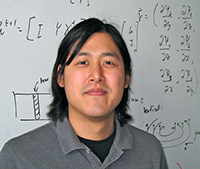
Abstract:
A handful of physics equations, backed by an arsenal of numerical algorithms, are used to generate many of the computer graphics images we see at the movies today. These include the Navier-Stokes equations, the non-linear oscillator, and a specialized form of radiative transfer that we call "the rendering equation". Our jobs would be very easy if we could use off-the-shelf computational physics algorithms to solve these equations, but unfortunately, this is usually not the case. In this talk, I will discuss how we arrived at these particular equations, our preferred methods for solving them, and why various alternatives were discarded.
Thanks to a generous grant from the Baden-Württemberg Foundation in Germany, qualified students from the Center for Research in Electronic Art Technology (CREATE) and the Media Arts and Technology (MAT) program at UCSB can study and realize spatial audio projects in the Spatial Audio Group at Karlsruhe University of Arts and Design (HfG), which is affiliated with the Zentrum für Kunst und Medientechnologie (ZKM). Students from Karlsruhe will also travel to Santa Barbara for similar purposes. As a conclusion to these activities, a conference on spatial audio titled InSonic is being held in Karlsruhe 26-28 November 2015, which will be attended by students and faculty from both places as well as other international participants.
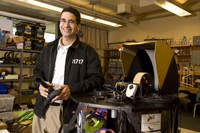
Amir Abo-Shaeer, Director of DPEA
The initiative, sponsered by the Mosher Foundation, aims to incorporate art and design principles into the academys' core curriculum of physics, engineering and mathematics.
www.news.ucsb.edu/2015/015236/engineering-new-model-education
The talk gave an overview of the research currently underway at the UCSB MIRAGE Lab, which Professor Kim co-directs with Professor Pradeep Sen.